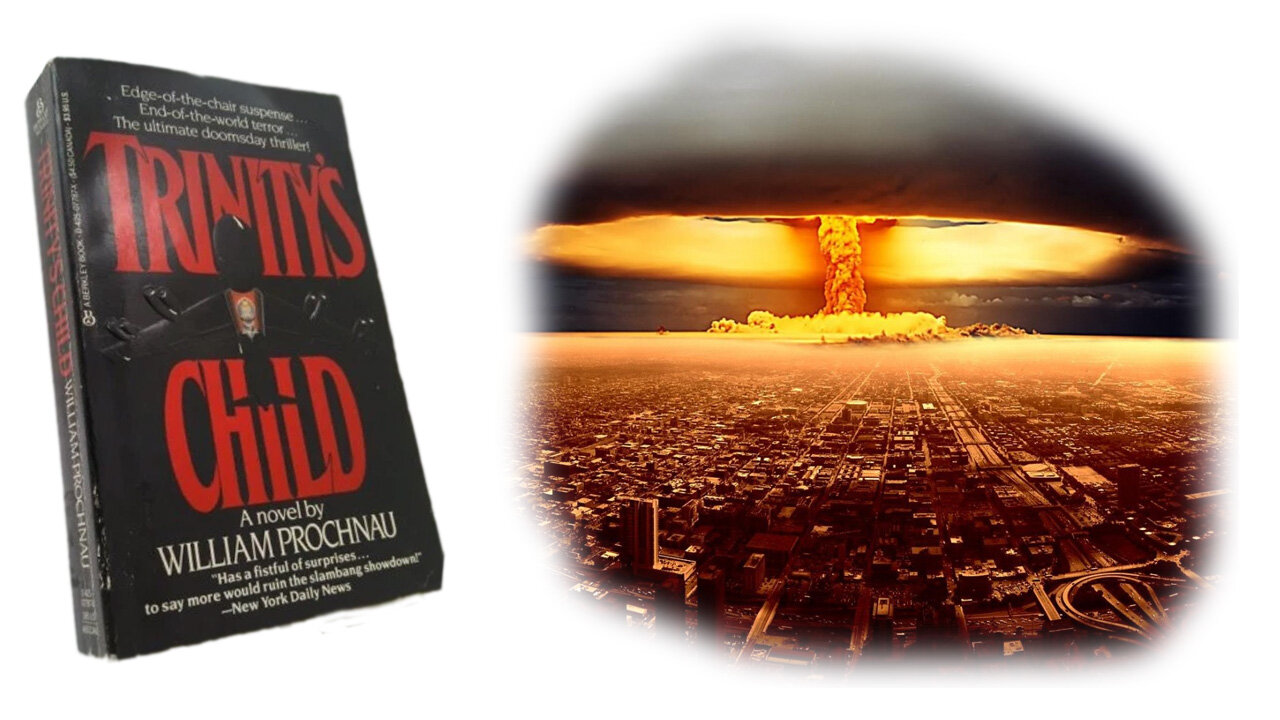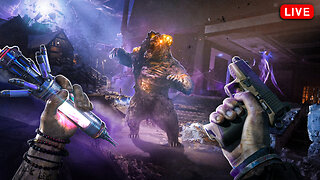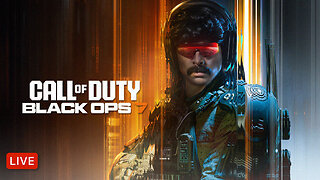Premium Only Content

'Trinity's Child' (1983) by William Prochnau
William Prochnau’s, 'Trinity’s Child' is a harrowing and sobering exploration of nuclear war, framed within the tense geopolitical realities of the Cold War. Rather than sensationalize the apocalypse, Prochnau uses a detailed, methodical narrative to dissect how power, protocol, and humanity might respond when deterrence fails and total war becomes real. The novel is a grim meditation on control, chaos, and the illusion of order in the face of unprecedented destruction.
The story opens with a cataclysm: a nuclear strike by the Soviet Union that devastates Washington D.C. and wipes out the core of the American government. The chaos that ensues is not just physical but constitutional. With the president presumed dead, command defaults to an emergency protocol that places power in the hands of a military officer aboard the airborne command plane Nightwatch, who takes on the codename "Condor." Simultaneously, another official, "Alice," claims legitimacy as the lawful president from an undisclosed ground location, triggering a crisis of authority amid national ruin.
What follows is not only a military thriller but a study in fragmented leadership. With conflicting orders emanating from multiple figures claiming to be commander-in-chief, the chain of command frays. Military officers, trained to follow clear directives, are thrust into the moral quicksand of deciding whose orders to obey when the survival of the nation — and possibly the world — is at stake. In parallel, a group of bomber pilots, sent on a retaliatory mission against the Soviet Union, struggle with the weight of their orders and the dawning realization that their actions may bring about the extinction of humanity, not its salvation.
Prochnau’s writing is clinical and precise, echoing the tone of military briefings and government documents. But underneath the surface formality is a deep current of dread. Trinity’s Child is not about the moment of nuclear annihilation as spectacle — it is about the bureaucratic and psychological unraveling that comes with it. The novel’s characters, while often defined by their roles and ranks, are not cardboard cutouts; they are human beings caught in a machine designed for mutual destruction, unsure of whether to continue turning the gears or try to break them.
The title itself references the first nuclear test, “Trinity,” suggesting that the events of the novel are the inevitable offspring of the bomb’s invention. If the Trinity test was birth, then this narrative is adulthood — when the bomb grows up, so to speak, and shows us what it was always capable of.
In the end, 'Trinity’s Child' is less a thriller than a warning. It asks readers to consider not just the consequences of nuclear war, but the fragility of the systems we trust to prevent it. It reminds us how quickly command can collapse into confusion, how easily retaliation can become annihilation, and how small the difference may be between lawful authority and madness when the sky begins to burn.
-
 1:42:56
1:42:56
Kim Iversen
3 hours agoAMERICA HUMILIATED: U.S. Generals Obey Israeli Demands And Hasbara Floods Social Media
35.6K50 -
 LIVE
LIVE
MattMorseTV
2 hours ago $2.46 earned🔴CHILLING + TALKING🔴
419 watching -
 LIVE
LIVE
SpartakusLIVE
1 hour agoNEW Black Ops 7 BETA || WZ too! And PUBG later?
107 watching -
 DVR
DVR
StoneMountain64
8 hours agoBLACK OPS 7 EARLY ACCESS GAMEPLAY
5.75K1 -
 LIVE
LIVE
ZWOGs
7 hours ago🔴LIVE IN 1440p! - Resident Evil 4 First Playthrough - Day 4 -ENDING?? - Come Hang Out!
43 watching -
 6:49:16
6:49:16
Dr Disrespect
9 hours ago🔴LIVE - DR DISRESPECT - BLACK OPS 7 MULTIPLAYER GAMEPLAY - NEW!
141K10 -
 1:26:12
1:26:12
Steven Crowder
10 hours agoThe Left is Violent (Part 2) | Change My Mind
442K712 -
 2:11:35
2:11:35
Pop Culture Crisis
5 hours agoElon Declares 'CANCEL NETFLIX' Trump Threatens Hollywood, Bad Bunny Superbowl Boycott? | Ep. 927
35.5K4 -
 3:26:05
3:26:05
Barry Cunningham
6 hours agoPRESIDENT TRUMP IS READY TO GO SCORCHED EARTH! SHUTDOWN DAY 2 BRIEFING!
37.4K25 -
 DVR
DVR
The Trish Regan Show
3 hours ago🚨Trump’s TRIUMPH! DEMS HUMILIATED on LIVE TV as SHUTDOWN BLAME BACKFIRES!
27K10
